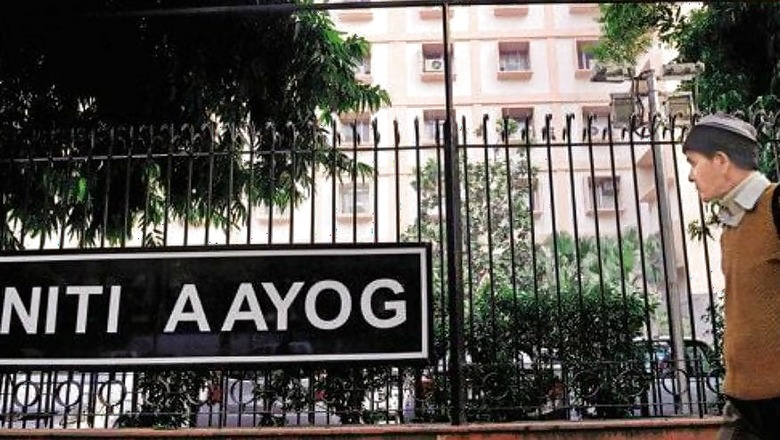
views
Government think tank Niti Aayog in its strategy document earlier suggested for the road sector a host of measures including expanding size of public fleet, augmenting highways network and road capacity, improving regulatory frameworks for better compliance and safety, among others. The Aayog released 'Strategy for New India @75', which defines clear objectives for 2022-23 in a detailed exposition of 41 crucial areas and suggests the way forward to transform India into USD 5-trillion economy. The strategy document also underlined that the Motor Vehicles (Amendment) Bill, 2016, pending before the Rajya Sabha, "must be passed without delay". Concerned about the growing number of fatalities on roads, the government think tank has emphasised on steps to curtail road accidents.
The document also listed other key objectives like ensuring last-mile connectivity, achieving the Bharatmala Phase I target by completing 24,800 km by 2021-22, including 2,000 km of coastal and port connectivity roads. It also stressed the need to complete the first phase of the Pradhan Mantri Gram Sadak Yojana (PMGSY) with quality monitoring at every stage and double the length of national highways (NHs) to 2 lakh km by 2022-23 from the existing 1.22 lakh km.
On need to expand public fleet, it said "the total demand for buses was approximately 3.40 lakh in FY 2017, while the availability/supply was only about 1 lakh". The Aayog also underlined the need to jack up funds for repair of roads saying that the annual outlay earmarked for maintenance and repair of national highway stretches is only about 40 per cent of the funds required.
Terming road safety as a major issue in the country with nearly 400 road related deaths being recorded daily, the document emphasised that "the Motor Vehicles (Amendment) Bill, 2016, pending before the Rajya Sabha, must be passed without delay. Constitute a National Safety Board to enforce road safety rules."
It said: "India should begin with earmarking 10 per cent of its annual budget for road and highways for maintenance to move towards the developed country norm of earmarking 40 per cent to 50 per cent of the budget for roads and highways for maintenance."
The strategy document also stressed on levying heavy penalties on contractors for poor quality of operations and maintenance (O&M) into contracts across all contract modes.
Besides, it said, there is a need to ensure that Ministry of Road Transport and Highways' Bhoomi Rashi web portal, which is integrated with the Ministry of Finance's Public Financial Management System (PFMS), is fully functional by March 2019.
"Ensure stringent testing of driving skills before granting driving licences by adopting technologically advanced methods such as the automated driving testing system," it said.
The report said: "Establish a transport data centre at the national level for applied research on roads. Enhance R&D on IT-enabled traffic management systems... Transform state road transport undertakings (SRTUs) and promote public transport, rural transport and last mile connectivity."
The Aayog said additional funding for public transportation and the creation of interoperable systems will help expand the reach and capacity of public transport and added the central government will work with states to develop bus ports and provide support on technologies/software such as VAHAN (for vehicle registration) and Saarthi (for driving licences).
Asking the government to increase technology adoption and seamless movement between different modes of transport, it said urban mobility must move towards multimodal solutions by ensuring seamless movement between different modes.
"Identify and develop multi-modal logistics parks (MMLP) to ensure seamless movement of freight. Encourage the road freight industry to adopt innovative technologies through incentives," the document added.
















Comments
0 comment